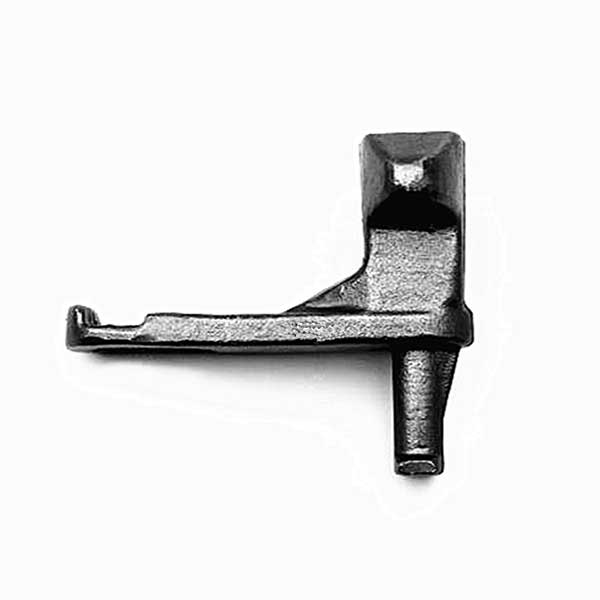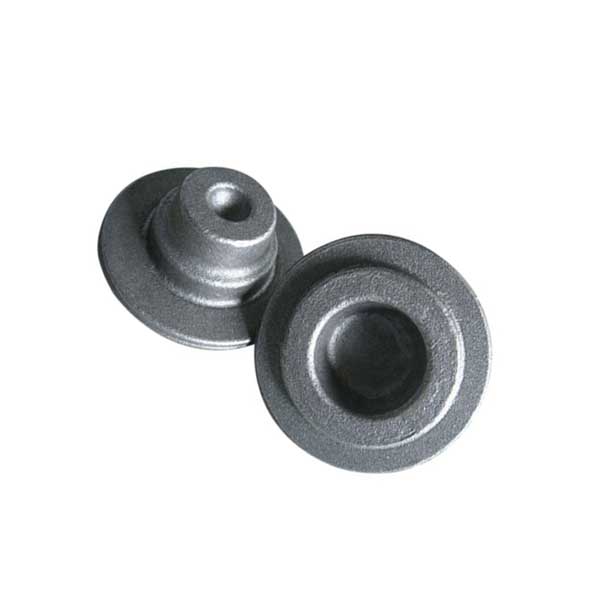The die forging process has high production efficiency, low labor intensity, accurate dimensions, small machining allowance, and can forge forgings with complex shapes; it is suitable for mass production. However, the cost of the die is high, and special die forging equipment is required, which is not suitable for single-piece or small batch production. Therefore, the quality of die forgings is also more concerned by users. Correctly understand the main factors affecting the quality of die forgings. very important meaning.
The main factors affecting the quality of die forgings

1. Defects in raw materials
For example, there are residual shrinkage holes, bubbles, porosity, inclusions, etc. in the ingot or steel, which may cause the forging to crack. Forging cracks caused by metallurgical reasons are often accompanied by a large number of oxides, sulfides, silicates and other inclusions. The raw materials of high carbon and high alloy steel are prone to serious segregation of second phases such as carbides. If they are not crushed and evenly distributed during forging, the mechanical properties of the forgings will be reduced, and the forgings may be cracked or evenly distributed during heat treatment. distortion. If there are scratches, scars, folds and cracks on the surface of the raw material, it will bring defects to the forgings. Therefore, raw materials must be inspected in die forging production.
2. Heating specification
When forging large die forgings and alloy steel die forgings, if the heating speed is too fast, the temperature difference between the inner and outer layers will be large, and the central part will be cracked due to temperature stress and structural stress.
When the heating temperature is too high and the holding time is too long to cause slight overheating, a lustrous, crystalline, and intergranular fracture will be produced. Coarse grains that are slightly overheated can be corrected by annealing or normalizing, followed by recrystallization. In severe overheating, fractures or stone fractures will occur. The characteristics of the fracture are fish-scale bright spots and transgranular fracture; the reason for the fracture is that the coarse austenite grains form an intragranular texture with extremely high stability. Texture characteristics are preserved.

The stone-like fracture has obvious coarse crystals, the surface has no metallic luster, the color is gray, and the intergranular fracture is caused. Saturated coarse austenite precipitates, surrounding austenite grains to form brittle crystal shells. Severely overheated forging billets have extremely poor mechanical properties. The naphthalene-shaped fracture can be normalized at high temperature to eliminate the intragranular texture, while the stone-shaped fracture is difficult to be corrected by heat treatment.
The forging heating temperature is low, and when the heat is not penetrated, cracks with transgranular propagation may occur, and the tail ends are sharp. When there is no subsequent heating process, there is no oxidation and decarburization on the surface of the cracks.
For alloy structural steel, if the final forging temperature is too high, the austenite will continue to grow after final forging, even exceeding the original grain size. Coarse-grained fractures can be seen in fracture inspection, and Widmanderin microstructure appears in high magnification observation. If the final forging temperature is too low, the steel is in the dual-phase region, the inclusions are distributed along the main deformation direction of the blank, and the ferrite precipitated from the austenite preferentially adheres to the surface of the inclusions to form a banded structure. Widmanderin and banded structures reduce the mechanical properties of forgings, especially the impact toughness. In order to refine the grains, improve the structure, and improve the mechanical properties, the steel with such a structure must be completely annealed to recrystallize it.
3. Die forging process
Different forms of die forging are used, such as open die forging, closed die forging, extrusion, upsetting, high-speed die forging, rolling, etc. The essence is to apply different forms to the blank through corresponding die forging equipment and dies. The thermal and mechanical conditions make it produce different physical fields and evolution processes of tissue properties. For the same forging, whether the selection of the deformation method is reasonable or optimal, the quality of the die forgings is very different. The wrong selection may make the forming process impossible, and the unreasonable selection will make the forming difficult and prone to many quality problems.

The die forging process parameters such as deformation temperature, deformation speed and degree of deformation are obviously directly related to the quality of die forgings. For example, for ingots or some materials, it is necessary to compact the structure and refine the grains through deformation. If the forging deformation is small, the expected effect cannot be obtained; some non-ferrous metals, especially high-strength aluminum alloys, magnesium alloys, etc. , requires a small deformation speed and an appropriate degree of deformation, and is suitable for forming on a press, which helps to avoid cracks.
The quality of die forgings is also related to forging design and forging die design. The selection of machining allowance and forging tolerance should be based on reality. If the specification is too small, it is easy to cause waste after machining due to surface defects and dimensional errors. Whether the design of the structure and the flash structure is appropriate will affect the flow and filling quality of the metal; if the setting of the lock is ignored, the size of the forging will be out of tolerance due to the misalignment of the upper and lower dies. In addition, the installation and tightening, preheating, cooling and moistening of the forging die should comply with the specifications, and the violations should be checked at any time and corrected in time.
The above is all about the factors affecting the quality of die forgings. Every link in the production of die forging will have a non-negligible impact on the quality of the forgings. Strictly follow the relevant quality inspection and control in the production process to ensure the quality of the die forgings.


